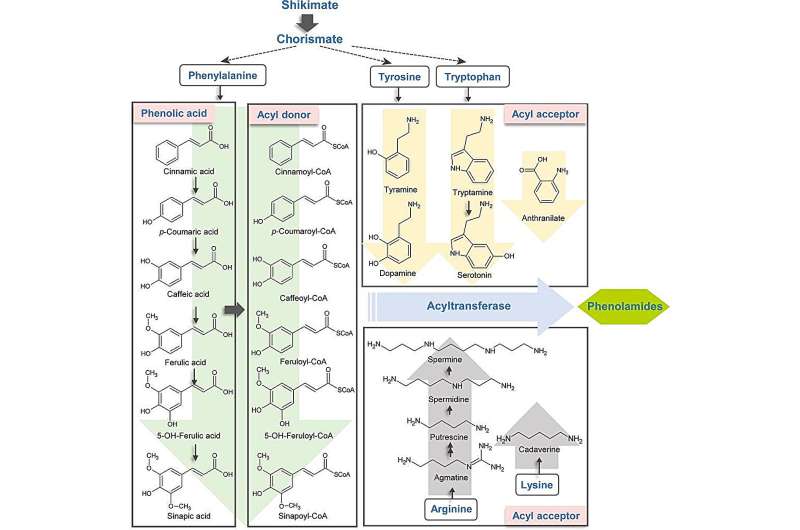This article has been reviewed according to Science X's editorial process and policies. Editors have highlighted the following attributes while ensuring the content's credibility:
fact-checked
proofread
The secrets of tea plant immunity: Research identifies key phenolamides in battle against anthracnose

Tea anthracnose significantly impacts China's tea production, with no effective control methods currently available. Research has shifted towards phenolamides, secondary metabolites with potential disease resistance properties. Although these compounds are effective in various plants, their role in tea plants remains under-researched.
Understanding phenolamide type, accumulation, and biosynthesis in tea plants is crucial for developing resistant cultivars and improving disease management, representing a significant area for research.
In August 2023, Horticulture Research published a paper titled "Identification and profile of phenolamides with anthracnose resistance potential in tea (Camellia sinensis)."
The research began with the identification of 19 types of phenolamides and their 27 isomers, across various tea plant tissues and organs. Employing UHPLC-Orbitrap-MS/MS in positive ion mode, the study documented the mass spectra of these compounds, revealing a predominance of protonated aliphatic over aromatic phenolamides.
The accumulation profile of phenolamides, determined through quantitative analysis, showed tissue and acyl-acceptor specificity, linking to the degree of acyl-modification.
Further research has found that phenolic amide compounds can participate in the resistance of tea plants to anthracnose. To understand this, the research introduced the anthracnose pathogen to tea leaves and monitored phenolamide changes. Results showed a significant induction of Fer-Put, especially in susceptible varieties, suggesting its crucial role in disease resistance.
Subsequently, an absolute quantitative analysis was conducted on the content of Fer Put in poor diseased leaves. Its content significantly increased with disease severity, especially in the S3 stage. Comparisons between susceptible and resistant tea varieties showed higher Fer-Put levels in the latter.
In vitro and in vivo experiments confirmed Fer-Put's efficacy in inhibiting anthracnose pathogen growth and reducing tea leaf infection.
Additionally, the study observed an increase in antioxidant enzyme activities in tea leaves following Fer-Put treatment, hinting at a possible mechanism for its disease resistance. The correlation between Fer-Put content and acyltransferase expression levels during pathogenesis was also explored. At least 15 potential acyltransferase genes were identified, with TEA002780.1 and TEA013165.1 showing significant expression correlation with Fer-Put accumulation.
In summary, this research establishes a foundational understanding of phenolamides in tea plants, particularly their structure, distribution, and role in anthracnose resistance. It highlights the potential of natural small molecules in tea plants for developing resistant cultivars and offers a theoretical basis for environmentally sustainable disease control in tea gardens.
More information: Wenzhao Wang et al, Identification and profile of phenolamides with anthracnose resistance potential in tea (Camellia sinensis), Horticulture Research (2023). DOI: 10.1093/hr/uhad154
Provided by BioDesign Research





















